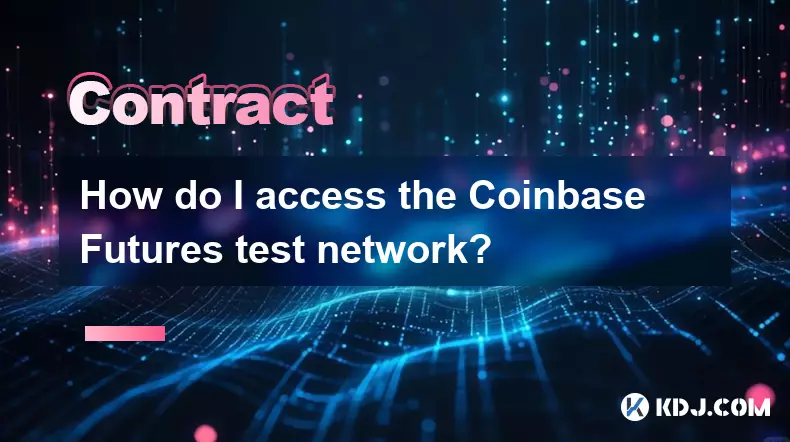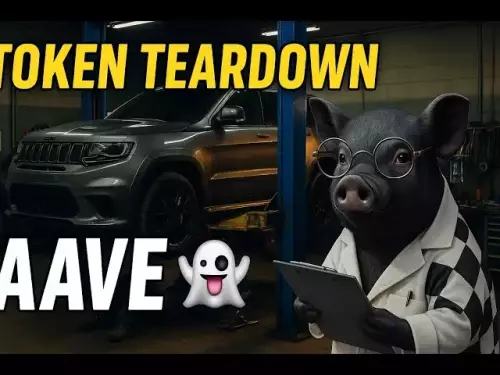-
 bitcoin
bitcoin $112195.049338 USD
2.42% -
 ethereum
ethereum $4124.915858 USD
2.81% -
 tether
tether $1.000570 USD
0.02% -
 xrp
xrp $2.861568 USD
2.25% -
 bnb
bnb $1000.346670 USD
3.04% -
 solana
solana $209.070819 USD
3.38% -
 usd-coin
usd-coin $0.999870 USD
0.02% -
 dogecoin
dogecoin $0.235379 USD
2.65% -
 tron
tron $0.335681 USD
-0.20% -
 cardano
cardano $0.803501 USD
3.38% -
 hyperliquid
hyperliquid $47.120881 USD
3.56% -
 chainlink
chainlink $21.501300 USD
3.44% -
 ethena-usde
ethena-usde $1.000571 USD
0.02% -
 avalanche
avalanche $29.793378 USD
3.62% -
 stellar
stellar $0.366964 USD
2.42%
How do I access the Coinbase Futures test network?
The Coinbase Futures test network offers a risk-free sandbox for developers to test trading strategies and API integrations using virtual funds and realistic market data.
Sep 22, 2025 at 05:36 pm

Understanding the Coinbase Futures Test Network
1. The Coinbase Futures test network is a simulated environment designed for developers and traders to experiment with futures trading without using real funds. It mirrors the live trading interface, order types, and market conditions of the actual Coinbase Futures platform. This allows users to refine strategies, test API integrations, and become familiar with contract specifications before engaging in live trading.
2. Access to the test network is typically granted through Coinbase’s developer portal. Users must register for an account and request access to the sandbox environment. Approval may require verification of identity or intended use case, especially for institutional developers or teams building trading bots.
3. Once approved, users receive API keys specific to the test environment. These keys are distinct from those used on the production network and cannot interact with real assets. They enable programmatic access to place orders, retrieve market data, and manage positions within the simulation.
4. The test network supports all major contract types offered on the live platform, including quarterly and perpetual futures. Price feeds are derived from real-time index values but do not reflect actual trade settlement. This ensures realistic behavior while maintaining risk-free operations.
5. Documentation outlining endpoints, rate limits, and authentication methods is available through Coinbase’s official API resources. Developers are encouraged to review these materials thoroughly to ensure compatibility and avoid common integration errors during testing.
Steps to Gain Entry to the Sandbox Environment
1. Navigate to the Coinbase Cloud or Coinbase Developer website and locate the section dedicated to futures trading APIs. Look for options labeled “Testnet,” “Sandbox,” or “Developer Environment.”
2. Create a developer account if you don’t already have one. Provide accurate contact information and specify your purpose for accessing the test network, whether for personal learning, bot development, or institutional research.
3. Submit a formal request for testnet access. Some periods may involve waiting due to high demand or maintenance cycles. Responses are usually delivered via email within several business days.
4. Upon approval, log into your dashboard and generate testnet-specific API credentials. These include a key, secret, and passphrase, which must be stored securely as they grant full control over your simulated account.
5. Configure your trading application or script to connect to the testnet URL instead of the production endpoint. Misconfiguration can lead to failed connections or unintended attempts to reach live markets.
Key Features and Limitations of the Test Platform
1. Simulated balances are automatically replenished when depleted, allowing continuous testing without manual resets. This feature supports long-term strategy evaluation and stress-testing under varying market conditions.
2. Market data latency may differ slightly from the live environment due to synthetic feed generation. While efforts are made to maintain synchronization, discrepancies can occur during periods of high volatility.
3. Order execution logic replicates the matching engine of the production system, including support for limit, market, stop-limit, and take-profit orders. However, slippage and fill rates might not perfectly align with real-world outcomes.
4. API rate limits on the testnet are often more lenient than on the live platform, enabling aggressive polling and rapid iteration during development. Users should still design their systems to comply with production thresholds to ensure smooth deployment later.
5. Customer support for the test environment is limited to technical documentation and community forums. Direct assistance from Coinbase staff is generally reserved for verified partners or enterprise clients.
Frequently Asked Questions
Can I use my existing Coinbase account to access the Futures testnet?
No, standard Coinbase accounts do not grant automatic access to the Futures testnet. You must register separately through the Coinbase Developer platform and apply specifically for testnet privileges. Your consumer account credentials will not work in the sandbox environment.
Are there any costs associated with using the Coinbase Futures test network?
There are no fees or charges for using the testnet. All transactions occur in simulation mode with virtual funds. No credit card or payment method is required to participate.
How closely does the testnet replicate the actual trading experience?
The testnet accurately mimics the user interface, API structure, and order mechanics of the live Coinbase Futures platform. Price movements are based on real indices, though execution speed and liquidity depth may vary due to synthetic market modeling.
What happens if I encounter bugs or errors in the test environment?
Bugs should be reported through the designated feedback channel on the developer portal. Include detailed logs, timestamps, and steps to reproduce the issue. Coinbase reviews submissions periodically and may issue patches or updates to improve stability.
Disclaimer:info@kdj.com
The information provided is not trading advice. kdj.com does not assume any responsibility for any investments made based on the information provided in this article. Cryptocurrencies are highly volatile and it is highly recommended that you invest with caution after thorough research!
If you believe that the content used on this website infringes your copyright, please contact us immediately (info@kdj.com) and we will delete it promptly.
- Bitcoin Wallets, Market Volatility, and Dormant Assets: What's the Deal?
- 2025-09-29 12:25:15
- Town Token, Crypto Payroll & Startups: A NYC Perspective on Adoption
- 2025-09-29 12:25:15
- DOT Parachains, XRP, and BullZilla: Decoding October 2025's Crypto Trends
- 2025-09-29 12:25:15
- Crypto Rollercoaster: Token Surges and Market Volatility in the Big Apple
- 2025-09-29 12:45:16
- Hyperdrive, Exploit, and Loss: Navigating the DeFi Minefield
- 2025-09-29 12:45:16
- MTP Swap, Buyback Plans & Market Makers: Decoding Crypto's Latest Moves
- 2025-09-29 12:25:15
Related knowledge

How do I use the scheduled order feature in Cardano (ADA) contracts?
Sep 28,2025 at 10:18pm
Understanding Scheduled Orders in Cardano Smart ContractsCardano operates on a proof-of-stakes consensus mechanism and uses the Plutus scripting langu...

How do I enable the "scalping-only" mode for Cardano (ADA) contracts?
Sep 24,2025 at 03:19am
Understanding Scalping Strategies in Crypto Derivatives1. Scalping in cryptocurrency trading refers to executing multiple short-term trades within min...

What is the settlement time for Cardano (ADA) contracts?
Sep 28,2025 at 04:18am
Understanding Cardano's Contract Settlement Mechanism1. Cardano operates on a proof-of-stake consensus model known as Ouroboros, which fundamentally i...

How do I add margin to Cardano (ADA) contracts?
Sep 27,2025 at 07:54pm
Understanding Margin in Cardano (ADA) Smart ContractsCardano operates on a proof-of-stake blockchain that supports smart contracts through its Plutus ...

What is the maximum position limit for Cardano (ADA) contracts?
Sep 23,2025 at 11:00pm
Understanding ADA Futures and Derivatives Market Structure1. Cardano (ADA) futures contracts are offered by several major cryptocurrency derivatives e...

What is the maker fee for Cardano (ADA) contracts?
Sep 26,2025 at 09:01am
Understanding Maker Fees in Cardano (ADA) Contracts1. The concept of maker fees applies broadly across decentralized exchanges and smart contract plat...

How do I use the scheduled order feature in Cardano (ADA) contracts?
Sep 28,2025 at 10:18pm
Understanding Scheduled Orders in Cardano Smart ContractsCardano operates on a proof-of-stakes consensus mechanism and uses the Plutus scripting langu...

How do I enable the "scalping-only" mode for Cardano (ADA) contracts?
Sep 24,2025 at 03:19am
Understanding Scalping Strategies in Crypto Derivatives1. Scalping in cryptocurrency trading refers to executing multiple short-term trades within min...

What is the settlement time for Cardano (ADA) contracts?
Sep 28,2025 at 04:18am
Understanding Cardano's Contract Settlement Mechanism1. Cardano operates on a proof-of-stake consensus model known as Ouroboros, which fundamentally i...

How do I add margin to Cardano (ADA) contracts?
Sep 27,2025 at 07:54pm
Understanding Margin in Cardano (ADA) Smart ContractsCardano operates on a proof-of-stake blockchain that supports smart contracts through its Plutus ...

What is the maximum position limit for Cardano (ADA) contracts?
Sep 23,2025 at 11:00pm
Understanding ADA Futures and Derivatives Market Structure1. Cardano (ADA) futures contracts are offered by several major cryptocurrency derivatives e...

What is the maker fee for Cardano (ADA) contracts?
Sep 26,2025 at 09:01am
Understanding Maker Fees in Cardano (ADA) Contracts1. The concept of maker fees applies broadly across decentralized exchanges and smart contract plat...
See all articles










































































